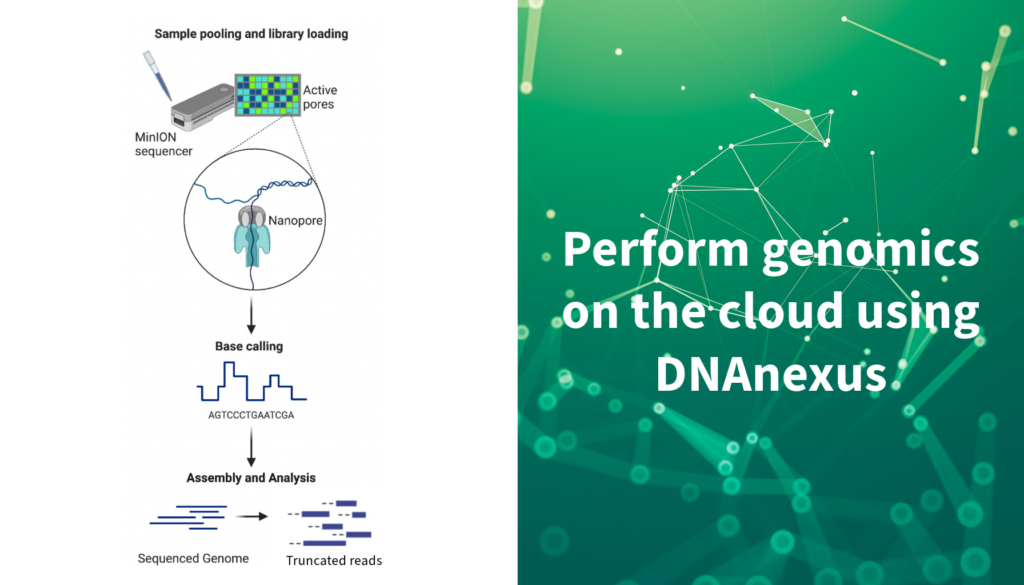Long-Read Sequencing (with ONT) proves useful in Biosynthesis Troubleshooting

This blog post will expand on the use of long-read sequencing (LRS) with Oxford Nanopore Technologies (ONT) for addressing genome truncation challenges in biosynthesis. We will also touch upon how DNAnexus is enabling user-friendly access to NGS pipelines that process ONT LRS data.
Challenges in troubleshooting biosynthesis problems
Quality issues in biosynthesis are tricky to nail down. Sequencing based omics analysis helps understand what’s happening at a molecular level. We were troubleshooting truncation in synthesis of vectors for a gene therapy. Since truncated vectors can lead to incomplete or dysfunctional therapeutic gene delivery, we were tasked with identifying the underlying truncation patterns and possible root causes.
Long-Read Sequencing: A Powerful Tool
Long-read sequencing technologies, such as Oxford Nanopore Technology’s (ONT) MinION platform, enable researchers to sequence an entire genome in a single read. This capability is essential for identifying truncated genomes, especially those that might be missed by short-read sequencing methods. Long read sequencing can also detect large structural variants including large deletions, insertions or concatemerization etc. giving a clearer picture of the genome.
ONT sequencing is particularly well-suited for analyzing these genomes. Its ability to generate long reads facilitates the comprehensive detection and analysis of even complex truncations. This allows researchers to pinpoint the exact location of truncations and gain insights into their potential causes, enabling more effective troubleshooting and optimization of the biosynthesis process. It offers faster sequencing at a lower cost and requires less complex library preparation.
Building a User-Friendly Analysis Pipeline with DNAnexus
While long-read sequencing generates the raw data, analyzing these large, complex datasets efficiently requires a robust bioinformatics infrastructure. This is where DNAnexus proved useful. DNAnexus is a cloud-based platform that supports the creation and execution of custom NGS data analysis pipelines.
A dedicated NGS pipeline, specifically designed to process ONT reads, was built and run on the DNAnexus platform. This pipeline automates the entire analysis workflow, from combining raw sequencing data (FASTQ files) to identifying and quantifying truncations and mismatches. The pipeline consists of several applets, or small, self-contained programs that perform specific tasks. These applets are linked together into workflows, allowing for the data to be processed in a series of steps. The pipeline for analyzing the genomes includes the following steps:
- Combine FASTQ Files: Combine raw sequencing data from multiple sources.
- Read-Length Distribution: Analyze the distribution of read lengths to assess sequencing quality.
- Read Quality Filter: Remove low-quality reads.
- Alignment & BAM File Generation: Align reads to a reference genome and generates BAM files.
- Truncation and Mismatch Analysis: Identify and quantify truncation events and mismatches.
- Per-Base and Truncation Count Analysis: Generate detailed statistics on truncation events and per-base variations.
DNAnexus: Empowering End Users
One of the most significant advantages of DNAnexus is its user-friendliness. The platform’s intuitive interface enables users to interact with the pipeline without needing extensive bioinformatics experience. They can upload their data, initiate analyses, monitor progress in real-time, and download results, all within a streamlined environment.
Long-read sequencing, particularly using ONT technology, is essential for effectively troubleshooting sequence truncation issues in biosynthesis. The combination of ONT sequencing with an NGS analysis pipeline built on DNAnexus provided a powerful and efficient solution, enabling researchers and end-users to develop safer and more effective therapies.
Contact us today to discuss how our long-read sequencing and DNAnexus-powered analysis solutions can optimize your biosynthesis process and enhance your research. Click here to learn more about our gene and cell therapy services.